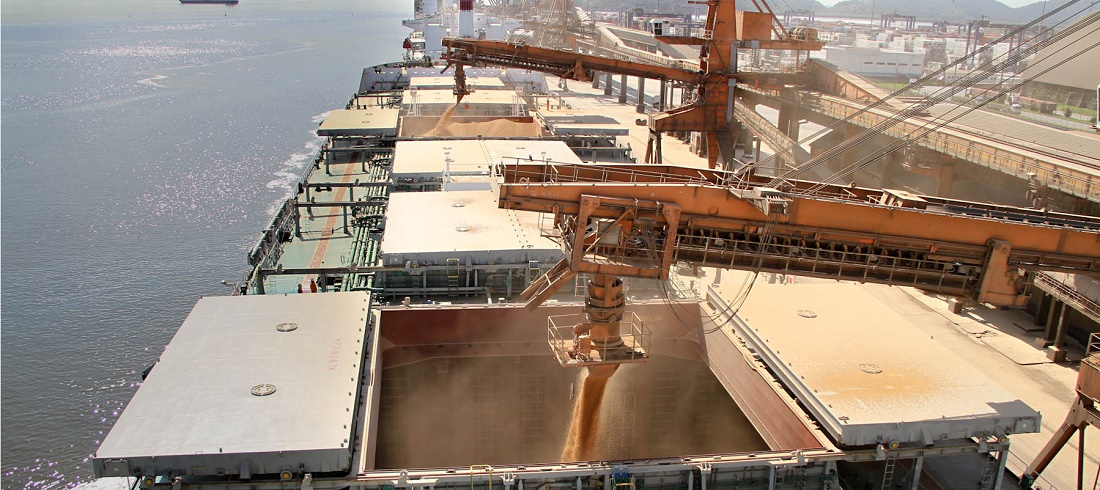
The use of larger vessels can reduce soybean export costs by 14%
May, 27, 2022 Posted by Gabriel MalheirosWeek 202221
The debate over sustainability in the soybean production chain cannot be restricted to the countryside. It must involve the entire chain, whose one important link is logistics. According to Thiago Péra, a researcher at Esalq-LOG, several actions have been taken to decarbonize maritime transport, although little has been done about transporting cargo domestically.
“There are numerous ways for Brazil as an agribusiness country to contribute to the decarbonization of the soybean chain, including improving truck energy efficiency, switching fuel types, replacing truck use with waterways and railroads, and changing the vessels themselves,” he explains.
According to him, 70% to 80% of soybean export logistics costs are internal. That is, they are costs generated in the transport between domestic ports. “However, when it comes to greenhouse gas emissions, particularly carbon dioxide, the numbers are flipped: the majority occurs in maritime transport, with the remainder occurring inland.”
Using Capesize vessels for soybean transportation
Brazilian agribusiness mainly uses Panamax ships, with capacities ranging from 60,000 to 70,000 tonnes per voyage. “Meanwhile, other segments use larger vessels, such as Capesize ships, which can handle more than 100,000 tonnes per trip,” he says.
According to Péra, using Capesize vessels would benefit the soybean chain in terms of both economics and the environment. “To give you an idea, according to some studies ran, such a substitution would decrease emissions by nearly 30%, also reducing soybean export costs to China by around 14%,” he says.
Please see below the track record of Brazilian soybean exports from January 2020 to March 2022. The data below was provided by Datamar’s foreign trade data service DataLiner.
Brazilian soybean (HS 1201) exports | Jan 2020 – Mar 2022 | WTMT
Source: DataLiner (click here to request a demo)
Péra claims that only the Espírito Santo terminal, in addition to the Alcântara Port Terminal in São Luís (Maranhão), is capable of receiving larger vessels in Brazil. “Keep in mind that the depth of the waters surrounding the port affects the reception of larger ships. Because a depth of more than 15 meters is required, not every port can receive those ships. Therefore, promoting this mode of transportation is very interesting for Brazil,” he concludes.
Source: Canal Rural
To read the full original article, please go to:
https://www.canalrural.com.br/alianca-da-soja/navios-capesize-custos-exportacao-soja-emissoes/
-
Meat
Apr, 07, 2021
0
Brazil asks Russia to lift slaughterhouse restrictions
-
Ports and Terminals
Oct, 11, 2022
0
Seafarers protest disembarkation restrictions at the Port of Santos
-
Ports and Terminals
Aug, 02, 2021
0
Port of Itaqui begins shipping the corn crop
-
Ports and Terminals
May, 23, 2022
0
Antaq approved the public hearing contributions regarding the Port of São Sebastião leasing



